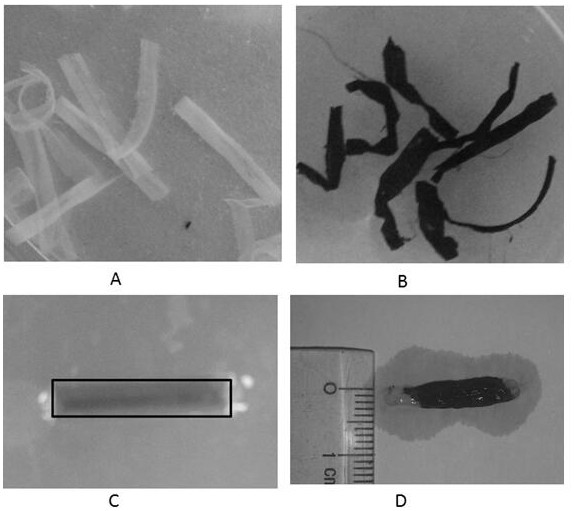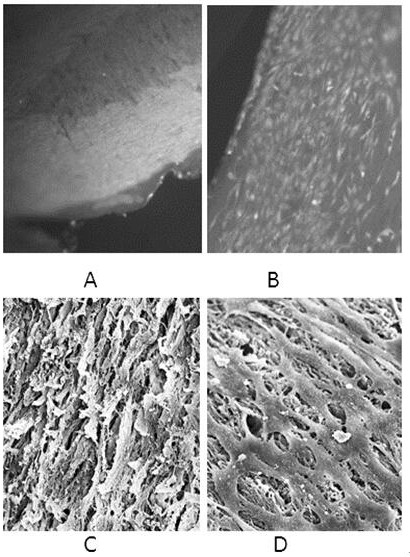Artificial nerve graft and preparation method based on sliced decellularized scaffold
A technology of nerve transplantation and grafting, which is applied in the direction of animal cells, vertebrate cells, bone/connective tissue cells, etc., can solve the problems of low decellularization strength, residual, and influence on cytokine activity, etc., and achieve the improvement of cell loading capacity and promote Proliferation of stem cells, effect that contributes to cell attachment
- Summary
- Abstract
- Description
- Claims
- Application Information
AI Technical Summary
Problems solved by technology
Method used
Image
Examples
Embodiment Construction
[0030] Further illustrate the present invention below in conjunction with specific embodiment:
[0031] Rats (400-500 g Sprague Dawley rats; from the Experimental Animal Center of Jiangsu University) were deeply anesthetized with chloral hydrate, and after about 500 mL of phosphate buffer solution was perfused through the heart, 4% (wt.%) paraformaldehyde 500 mL, fully fixed rat tissue. The rat spinal canal was dissected, the spinal cord was carefully separated, the meninges on the surface were carefully removed, and then fixed in 4% paraformaldehyde for about 2 hours. Embedded in OCT embedding medium, the Leica cryostat was used to cut longitudinally at -15°C, and the slice thickness was selected as 60 μm. After the slices were taken out, they were preliminarily washed in phosphate buffer, and then entered into the decellularization program.
[0032] Soak slices in 3% (wt.%) Triton X-100 for 2-3 h, then wash with a large amount of phosphate buffer; wash after soaking in 1M ...
PUM
| Property | Measurement | Unit |
|---|---|---|
| thickness | aaaaa | aaaaa |
| thickness | aaaaa | aaaaa |
Abstract
Description
Claims
Application Information
 Login to View More
Login to View More - R&D
- Intellectual Property
- Life Sciences
- Materials
- Tech Scout
- Unparalleled Data Quality
- Higher Quality Content
- 60% Fewer Hallucinations
Browse by: Latest US Patents, China's latest patents, Technical Efficacy Thesaurus, Application Domain, Technology Topic, Popular Technical Reports.
© 2025 PatSnap. All rights reserved.Legal|Privacy policy|Modern Slavery Act Transparency Statement|Sitemap|About US| Contact US: help@patsnap.com


